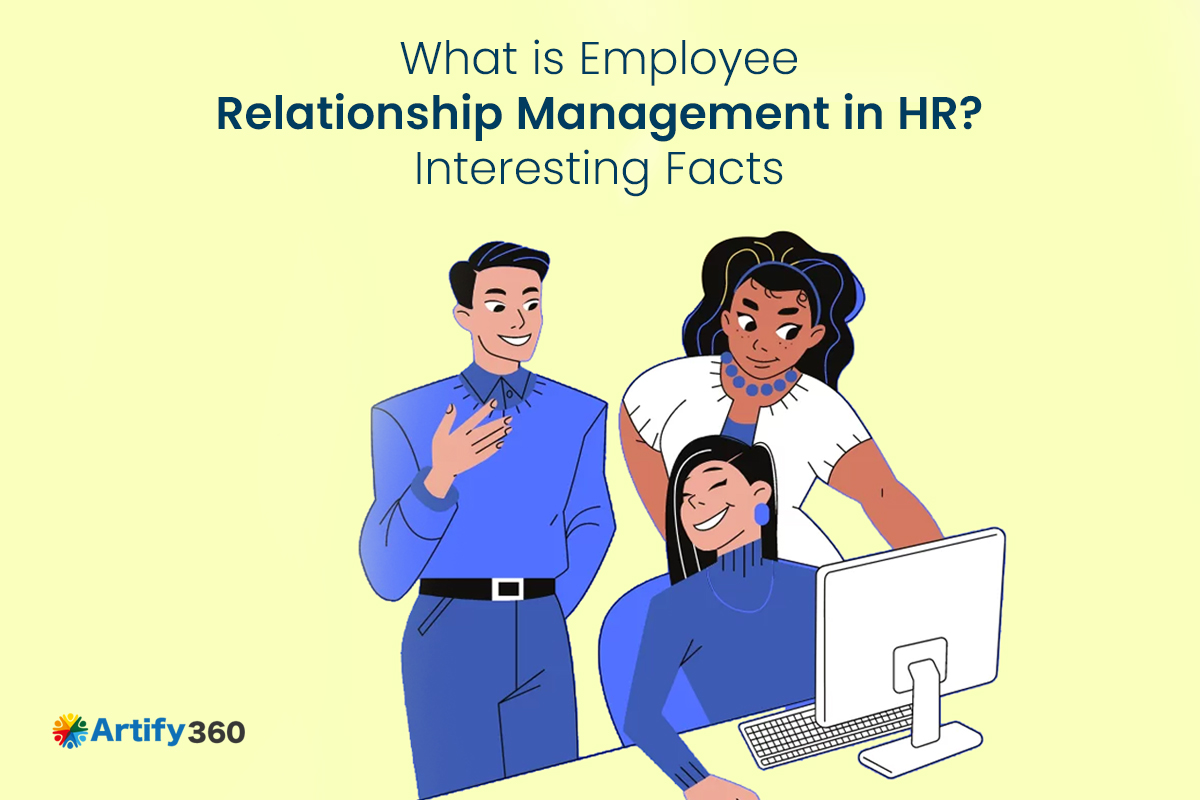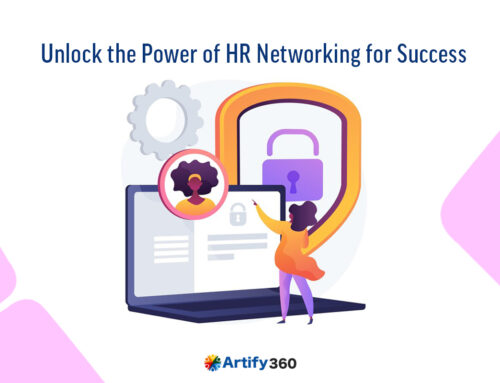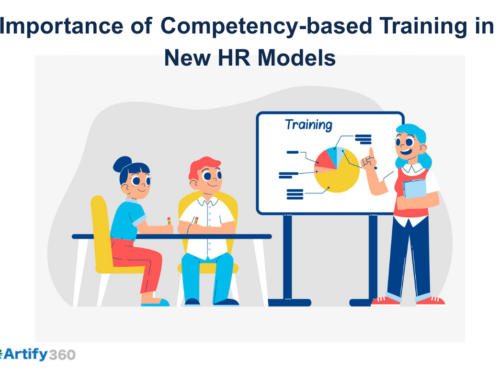Considering the amount of time that employees in an organization spend with each other and their business counterparts, it is significant to raise the value of relationships. You can evaluate this model to optimize the productivity and performance aspects of your organization’s workflow management.
The concept that measures this particular section in an organization’s operations model is the Employee Relationship Management (ERM). This article is a comprehensive guide to the implementation and impact of employee relationship management in your organization.
You can learn more about the role, responsibilities, benefits, and challenges of the employee relationship management domain. Digitization and automation techniques can help boost your organization’s core employee engagement values and possibilities. The concept of ERM leverages this scope to an optimum level.
When you focus more on the segments related to employee relationship management prospects, chances for organizational growth and success will be at the highest. Productivity concerns and performance objectives for company progress are the optimum factors in this particular scenario.
Discover more about why a proven and dedicated one-stop solution like an HR software product can help you excel in the sector. It could empower you to perform better in delivering an authentic and top-notch employee experience process in the organization.
Also Read: Essential features for employee management in HR software
What is Employee Relationship Management?
In simple terms, employee relationship management is all about managing the relationships within your organization. It could be the connection between resources, the collaboration of an employee with the organization’s mission and values, or a combined effect of various relationships in the firm. The onus of ERM is to integrate all these features well to support the overall HR operations regarding employee functions.
The primary motto of ERM should be to establish a core platform for obtaining maximum employee satisfaction. It is a factor that directly affects the performance and productivity of your company. The fulfillment of employee needs can authorize an exclusive and essential communication, collaboration, and cooperation model.
Organizations should arrive at a business structure and work culture that promotes the qualities of their employees to make way for ERM implementation. The inclusion of employees in every step of the process is important to create a broader impact and work with trusted resources.
The core aim of the ERM process should include all types of employees and business performance possibilities. It should foster a positive relationship between employees, managers, HR personnel, contractual staff members, external partners, etc. Multifold capabilities and merits open up in this exclusive model for business operations growth and excellent performance.
Role and Relevance of Employee Relationship Management
When an HR professional delivers ERM context in a business model, there are certain roles and responsibilities that they should undertake. Similarly, the prospects of ERM should portray a certain level of relevance that improves the quality of the organizational operations as a whole.
Take a look at the below points to recognize the role and relevance of ERM for your business:
- An HR professional must cultivate the landscape for employee relationships in the organization. It includes peer relationships, managerial terms, and guided business context interactions. Without proper relationship prospects, employees might look to leave the organization. At any given time, 56% of the workforce in an organization is looking to shift jobs, according to survey reports.
- Intangible benefits play a huge role in the prominent adoption of ERM functions. Give importance to factors like employee motivation, skills management, effective collaboration, critical thinking, core decision-making, etc., to boost the process.
- The mutual benefits of ERM implementation are beyond dispute. When you have a relevant ERM process, employee management functions are easy to deploy. Similarly, the right proportion of employee experience with a factor of priority can boost your ERM prospects further.
- From an HR perspective, team-building activities play a huge role in ERM support. Example processes involve the likes of social interactions, cross-functional teams, transparent communication tools, direct meeting spaces, active surveys for feedback and review, proper assessment of existing ERM activities, etc.
Benefits of ERM for Your Organization
The top advantages of employee relationship management from an organizational context are as follows:
Better employee engagement
The primary advantage of an ERM model execution in your company is the availability of better chances to promote employee engagement, experience, satisfaction, and morale.
Optimum employee experience
Once you help your employees grow and succeed in their roles, their overall experience with the organization and with each other changes for the better.
Lower employee turnover
Once you have an effective ERM process in place, it is possible to change the trajectory of the employee retention model by lowering the resource turnover rates of the organization.
Enhanced collaboration
ERM processes will teach the employees to focus on the delivery of enhanced collaboration support within the organization’s premises. You can create operations policies based on the ERM model. More than 50% of businesses use this exclusive feature.
Solid employer branding
The concept of employer branding is highly important for an organization’s market positioning and industry placement. ERM guides you to achieve solid branding for your company that can help include more resources with a better vision for the future.
Stronger work-life balance
The strategic evolution and implementation of work-life balance or fit is uniquely possible in an organization’s progress model. With ERM, you can make it stronger and better.
Opportunities in career development
The professional growth and career development of your employees are made possible with an active and energetic organization. ERM delivers harmony for your employees to arrive at this feature.
Trusted work environment
With ERM, you can experience trust and support in a work environment that guarantees organizational growth and development. The promising idea behind this specific feature is the acceptance of the limitations and shortcomings of each employee.
Professional culture and community
The values of culture and community in an organizational context should be embraced with the ideal support of the ERM process. Professional employees can gain sufficiently with this model.
Constructive relationships
You have the golden opportunity to turn all your relationships to arrive at a constructive tone in the workplace when you become part of a business model with ERM services.
Proactive workflow and resources
ERM solutions will guide you to become better with workflow and resource management. You can get the guarantee of a proactive employee engagement model in the company with this feature.
Challenges of ERM Implementation in A Business Model
As with any other latest technology practice, when you deploy ERM in a business model, challenges and obstacles may arise. To tackle and overcome these challenges, you should have a clear understanding of the problems. The main challenges that could affect your feasible ERM implementation are listed below:
Resistance to change
Similar to core HR and business operations, the adoption of ERM could face resistance in your organization. This resistance to change is the biggest barrier for you to overcome in a business context.
Lack of quality resources
The active delivery of quality from an employee perspective is vital for your organization’s progress. When you lack such quality in your human capital resources, even ERM adoption may not help your cause.
Complex work environment
The complexity of your existing work environment could make it unfeasible for easier introduction of ERM services and solutions.
Ineffective risk management
Risk assessment and mitigation are important in an organization’s operations management model. If it is ineffective, it might affect your ERM execution prospects severely.
Limited long-term visibility
When you cannot see the long-term vision for your organization, the scope and potential of the ERM process could be limited.
Lack of information and support
You should have a ton of resources available at your disposal to gather information and insights into the ERM operations. Without these efficient support mechanisms, it will be hard for your organization to thrive in employee relations.
Improper assessment of scope
When you fail to observe and analyze the scope of ERM features or functions, it could prove to be a problem for your organization’s employee experience and engagement assessment.
Employee Relationship Management: Best Practices & Tips to Follow
When you go with the adoption of employee relationship management in your organization, it is crucial to follow a set of best practices and essential tips. Check them out below:
- Open communication should be a priority in your organization. HR managers should help their employees actively participate in discussion models and feedback channels. They should be able to give suitable feedback that you can receive for the bigger picture.
- Recognition is key to improving your ERM purpose with effective ease. HR division should concentrate on providing valuable recognition for all aspects of the employee management process in an organization.
- Typical HR features like training and development of resources, conflict resolution, and employee feedback management play a huge role in the quality delivery of ERM tools and techniques.
- The primary focus of ERM deployment in your organization should be the healthy and happy evolution of your employees. Resources can only grow when they feel valued, engaged, empowered, and motivated. It helps boost the performance and productivity of your organization.
- Accept and embrace the challenges and opportunities in ERM implementation. Give space for factors like diversity, inclusion, sustainability, etc., and stay in tune with the rising demands of globalization and changes in workforce segments.
How Can Artify 360 HR Software Contribute to Employee Relationship Management in Your Business?
When you decide on a workflow management process that connects well with your operations process, the ideal step is to implement those processes to create optimum impact. Digital technology tools and innovative business practices can help you in this regard. When it comes to delivering employee relationship management objectives, the adoption of an exclusive HR software platform or product can help you.
An example of one such cloud HR software to boost ERM goals is Artify 360. We have a unique, end-to-end HR management solution that takes care of all employee engagement capacity terms and possibilities from the hiring to the retiring stages. Our HR payroll software solution is capable of integrating all these employee phases with tasks mentioned under different modules.
The scope and potential of ERM can be further explored with the unique support and value of HR software systems that provide niche or industry-specific solutions. To learn more and discuss this topic, we have a dedicated team who are experts in digital software programs.
Reach out to us for more information, a free consultation, and a potential demo session on Artify.






